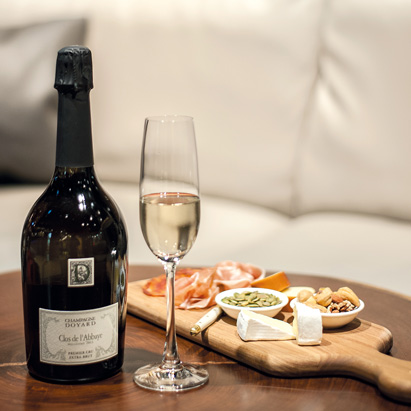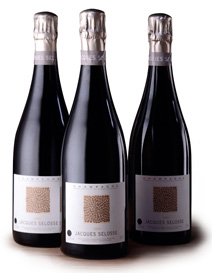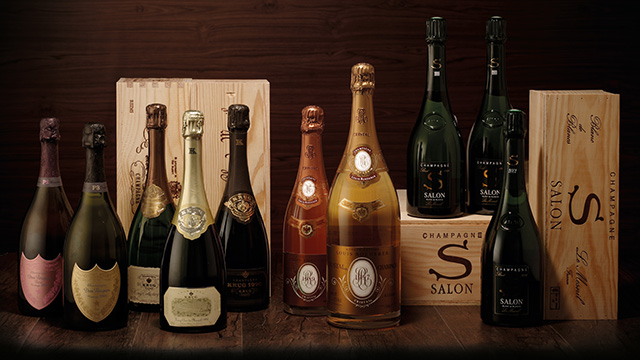During the 1980s, grower champagnes rose in response to the call of quality wine. Under the lead of Anselme Selosse, their quick development shown the world that it is possible for Champagne to develop single-vineyard products like Burgundy, and these products began to make their appearance in menus of highend restaurants around the world. Grower champagne’s quality of being able to go with a wide variety of courses made them favorable to sommeliers. Moreover, many grower champagnes became even more expensive than bigger brands. The champagne market is experiencing a dramatic change nowaday, however, can we conclude that grower champagne are the future of Champagne?
According to Comité Interprofessionnel du vin de Champagne, there are 15,800 wine growers in the region of Champagne. 4,278 of them produce champagne of their own brands. However, in 2017 alone, 87 of those 4,278 growers have given up their own brands. In 2008, the total amount of grower champagne sold was 78.5 million bottles, while in 2017, the number reduced to 57.4 million. In other words, while we celebrate the success and vibrant growth of grower champagne in the last decade, their production actually dropped for nearly 20%, and the sales were also declining. Two possible factors might have resulted in the shrinking. First of all, small growers are generally unable to do mass production. Although working their way to single vineyard or single grape variety were the way out facing the limitation of having not enough vineyards. However, as 70% of the world’s champagne are sold by large firms, and 80% of champagne consumption are dominated by non-vintage products, it is more than difficult for the market to accept their unique and high quality product even they have spent so much efforts on. An even realistic problem lies in the continuously rising grape price. Currently, grapes in Champagne region are sold at 6.2 Euros per kilogram. Aside from being the highest price around the world, the five largest firms monopolizing the champagne market is continuously raising the buying price as champagne exports demand keep growing. In order to maintain their own living, more and more wine growers have chosen to give up making their own wines.

With limited marketing resources, grower champagne were mostly reliant on domestic market. Despite the fact that French domestic champagne consumption has dropped from 70% of total production to less than 50% in the past 15 years, 87% of grower champagne are still consumed domestically. However, according to our observation, only grower champagne that were able to export and sold at high price abroad can really survive as an independent brand. The reason lies in the fact that there are relatively few competitors abroad, and that the retailers are usually more active in marketing. Still, even successfully exported, increasing production and widening product range are still the inevitable steps to take before a higher income is made possible. For small growers whose vineyard cannot be expanded, the only way to increase production is to buy grapes and vineyards, and the only way to widen their range of products would be to exchange grapes with other growers. However, in order to buy grapes, vineyards and exchange different varieties of grapes, they would need to change their roles from RM (Récoltant Manipulant) into NM (Négociant Manipulant). This happened for many wellknown RMs like De Sousa.

That being said, grower champagnes developed the single vineyard concepts from their restrictions, and they are able to make boldly experiment without the burden of larger firms. For example, Olivier Collin of Ulysse Collin focuses on champagne making from single vineyard; Francis Egly of Egly-Ouriet is pushing Pinot Noir to the extreme, stating that perfect wine comes from perfectly ripen grapes, and has always been the last vineyard in Champagne region to harvest; Anselme Selosse from Jacques Selosse is using pure natural wild yeast, buying oak barrels from famous Burgundy firms like Leflaive and Coche-Dury, while employing the Solera system to make their wine. While these innovations brought more possibility to champagne, they also pushed large firms with more resources to make breakthroughs and featured products in smaller batches. Examples include the Dom Pérignon P3 which emphasizes an even longer sur lie period, Louis Roederer Brut Nature Philippe Starck Label 2009 which came from single vineyard with zero dosage, as well as Paillard and Krug started to spelt out the history of the bottle including its disgorgement date on the back of their products.
We are now looking at a turning point of grower champagnes. We should see more collaborations between different growers, and even smaller growers will gradually give up on making their own products, resorting to their old ways of selling grapes to larger wineries. Either way, grower champagne has taken Champagne into a whole new level. What will the future of Champagne region be? Let us open a bottle of Champagne and see!



